Features
The Elusive Rs. 1,700
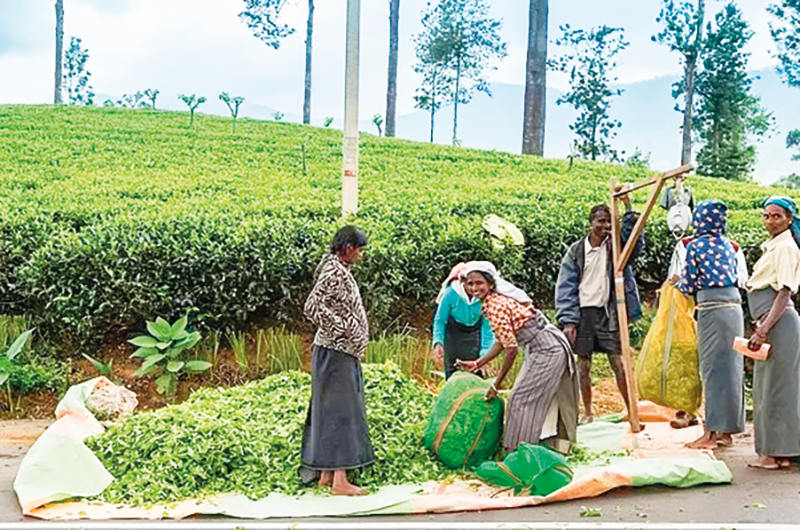
by Vijaya Kumar
It is now six months since Ranil Wickramasinghe announced at the Kotagala May Day Rally of the Ceylon Workers’ Congress that the daily wages of estate workers would be increased to Rs. 1,700 and that they would be paid Rs 80 for every kilogram of green leaf plucked above the norm. The government gazetted the decision as an order from the Commissioner of Labour, the daily wage being made up to Rs. 1,700 by adding a Rs. 350 special allowance not liable to statutory payments of EPF and ETF to the basic wage of Rs 1,350. However, the Regional Plantation Companies (RPCs) obtained an interim injunction against implementing the gazette as they were legally challenging the decision as being unilateral and arbitrary.
The government realizing that the delay meant they would not be able to use it to muster estate votes for Ranil in the forthcoming Presidential Election, withdrew the gazette and made a decision at the Wages Board to increase wages. The wage decided on at the Wages Board was still Rs. 1,700 but the Rs. 350 special allowance added to the basic wage of Rs. 1,350 was now loosely worded as a payment based on a productivity model.
This was further clarified by the Planters’ Association as being available to workers as payment of Rs 50 per kilogram of green leaf plucked above the norm, gleefully announcing that this would allow workers to earn well above Rs 350 as there were no limits. However, this was a fraud perpetrated on the workers as the over kilogram rate was an existing benefit available to the tea and rubber workers and could not be considered a wage increase, although the rate had been increased from Rs 40 to Rs 50, nowhere near the Rs 80 per kilogram promised by Ranil.
Wages in the plantations were based on Wages Board decisions until private management took over in 1992. Under private management, they were decided on by a Collective Agreement negotiated between employers and trade unions every two years. Over the years, the 22 RPCs (Regional Plantation Companies) which were managed by different companies, each controlling 10-12 estates, became consolidated with Hayleys controlling a quarter of the estates and Richard Pieris controlling slightly less.
Half the estates are now controlled by two big companies. This monopoly situation has bolstered the ability of management to suppress workers and their rights. The management techniques practised by RPC Managements to increase profitability appear to be focused on undermining workers’ rights by converting permanent staff into informal workers offered contract work or independent work through a pernicious outgrower system, paying them poverty level wages and reducing their social protection benefits.
Wage negotiations became protracted with pay rises implemented only after three or four years, worker demands for a pay rise routinely dismissed on the claim that it would bankrupt the industry, often ending in workers having to accept a nominal increase with no arrears being paid when settlement was reached. Management has meanwhile made a fine art of hiding profits by transferring them to associate companies to justify their claims of running at a loss. But one does not understand and it remains unexplained why companies are taking on more and more estates if in fact they are making a loss. Management is able to offer low wages knowing full well that any strikes by workers living on the kind of subsistence wages paid to estate workers cannot last long and are bound to fail.
Things came to a head in 2021 when the RPCs fought against a budgetary decision based on an election promise by the government to increase wages from Rs 750 to Rs 1,000. This was at a time of high inflation with workers finding it difficult to afford basic food for their families while at the same time rupee earnings of the companies from tea and rubber exports had almost doubled due to the devaluation of the rupee against the dollar. However, management refused to come up with a reasonable offer.
Minister Nimal Siripala de Silva faced with the paltry offers of the RPCs decided to enforce the wage increase through a Wages Board mechanism. The Wages Board decided on a Rs 900 wage plus a Rs 100 allowance in April 2021. The RPCs as usual went to courts and the wage increase was implemented only in October that year. The RPCs also announced that they were no longer bound by Collective Agreements. They reduced the number of days of work offered to workers and arbitrarily increased the norms by around 15-20% penalizing workers by paying a reduced wage, the so-called ara per (half name) if the norm was not achieved.
The 2024 decision of the Wages Board is problematic. Unlike Collective Agreements, Wages Boards prescribe a minimum wage that has to be paid to all workers (Section 24 of the Wages Board Act). The fact that a reduced wage cannot be paid has been legally established as long back as 1931 in a case brought by the Attorney-General against the Superintendent of Perth Estate, Kalutara who had paid workers three quarters of the Wages Board determined wage and given them six hours of work (104-NLR-NLR-V-34-The-Attorney-General-v.-Urquhart.pdf).
The productivity-based allowance is an incentive payment which is variable and it is difficult to understand how this could be part of a minimum wage. Furthermore, the productivity-based allowance is available only to tea pluckers and rubber tappers with many workers coming under the same Wages Board like factory workers, weeders, watchers, drivers and personal staff in bungalows unable to claim the allowance.
The only variation permitted by the Act (Section 20.2) is if on an agreement at the Wages Board a formula is accepted to change wages at intervals as was seen in the incorporation of a cost-of-living (C-O-L) allowance in 1984 of four cents on the daily wage per unit increase in the C-O-L index in 1984. The Commissioner of Labour was empowered by the Wages Board to issue an order on the wages to be paid each month based on the C-O-L index of the preceding month.
Since the Wages Board has decided on a minimum wage and this minimum wage is Rs 1,700 per day, it is incumbent on management to pay every worker this wage unless he or she is unwilling to complete a full day’s work (eight hours or nine hours if a one-hour lunch break is allowed) provided such work has been offered to the worker by Management (Section 24). Non-payment of the Wages Board prescribed minimum wage to workers in that particular trade is an illegal act.
The attempt to dupe the workers by Ranil’s campaign has backfired on the RPCs. It is clear that all workers should be paid Rs 1,700 per day as the Wages Board decision stands and it is the duty of the Commissioner-General of Labour to enforce this decision.
Furthermore, it may be necessary for the Commissioner-General to revisit many of the techniques, used by the RPCs since 2021 to pay less than the Wages Board determined daily wage. They may have been permissible under the Collective Agreements but are not under the Wages Board Act. Management has and is even now resorting to several illegal acts which go against Wages Board decisions. Many estates are still paying the old rate of Rs 900 or Rs 1000 per day for workers who have not been registered and therefore not on the check-roll and this is clearly illegal.
So is the practice of reducing wages including the payment of ‘half name’ due to non-achievement of norms as any reduction of wages determined by the Wages Board is clearly illegal unless Management can prove that a full day’s work was offered and the worker was unwilling to work. Perhaps, there is even a case for workers to take legal steps to recover the amounts deducted by estate management in paying the ‘half name’.
It was the greed of the Management Companies for more and more profits that forced the Minister to take plantation wages out of the Collective Agreement scheme into Wages Boards. Their participation in a fraudulent scheme to cheat plantation workers into thinking that that their daily wage rate is to be increased to Rs. 1,700 as part of Ranil’s election strategy is thankfully going to end up ensuring that all workers in the tea and rubber trade are paid the Rs. 1,700 daily wage proposed by Ranil, bringing it almost in line with the Indian Rupees 482 (1 Ind. Rupee = 3.55 SL Rupee) daily wage of tea workers in Kerala, India.
Vijaya Kumar is Emeritus Professor, University of Peradeniya, the President of the Lanka Estate Workers’ Union and a member of the Executive Committee of the National Peoples Power.
Features
An overlooked priority govt. can fix
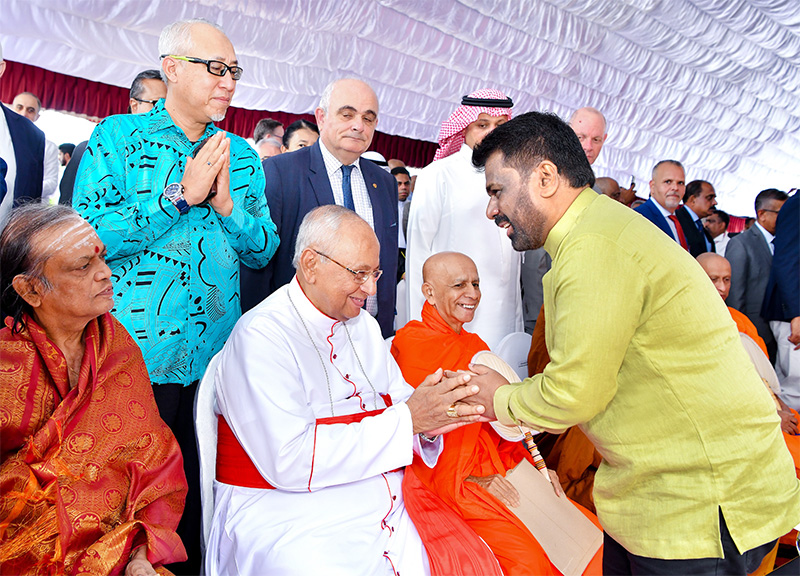
by Jehan Perera
Among the important promises of the NPP government to the people has been to address the problem of corruption and waste. This was the centre piece of the Aragalaya protests that brought down the government in 2022. The government made many other promises too when it was in the opposition. But unlike in the case of these other promises, such as to reduce the cost of living, the promise to reduce corruption and waste is within the power of the government to a greater extent than to bring down the cost of living which is determined by external factors more than by internal ones. The government has cut down on its costs considerably. Its celebrations of its electoral victory and swearing in of the new president and parliament was on a low key. The president took only a small delegation with him on his first official trip abroad to India.
The government’s first hundred days in office was also remarkable for the absence of any financial scandals involving members of the government. This is a noteworthy achievement in a context in which those in the seats of government have invariably been involved in deals with one party or the other. Dealing with the problem of corruption which has infiltrated every level of society will be very challenging especially as those who live on fixed incomes cannot meet their costs of living on their present salaries. The government’s inability to keep its promises made regarding reducing the cost of living and increasing salaries is due to its inheriting a problem not of its own making, which includes being fettered by agreements entered into by previous governments.
The government’s commitment to making Sri Lanka clean is manifested in its appointment of a Presidential Task Force for a clean Sri Lanka. The task force aims to elevate the country through a comprehensive social, environmental, and ethical transformation. It appears that the government has taken the position that change must begin at the top as those who are its members hold top positions in the government, including the president’s secretary, the commanders of the armed forces and police and senior heads of the urban development authority. However, addressing concerns regarding its composition, ensuring inclusivity, focusing on the enforcement of existing laws, and providing clear programmatic details will need to be dealt with.
NEGATIVE TROIKA
An important task that the government has taken upon itself, apart from seeking the elimination of corruption and waste, is to eliminate racism and extremism in society. The government appears to be taking this as a very serious matter. The confidence in the people that the government is non racist can be seen in the mandate it received from the areas in which the ethnic minorities predominate, notably the north and east, but also the central regions. However, the Task Force for a Clean Sri Lanka potentially overlooks the perspectives of important ethnic and religious communities. This lack of inclusivity may hinder the programme’s acceptance and effectiveness across diverse populations.
It can be said that corruption, waste and racism are the troika of negative values that drove the country to the pit of despair. The country lost a considerable part of its income and wealth due to its national resources being taken for private purposes and being destroyed in war. A key reason for the escalating ethnic conflict that eventually resulted in protracted war was the feeling amongst the ethnic and religious minorities that they were disregarded, not included and discriminated against. The fact that most of the government’s appointees to decision making bodies, such as the cabinet, the deputy ministers and most recently, the Clean Sri Lanka task force, are from the Sinhalese community could evoke memories of the past.
The government’s justification for its pan-Sinhala selections (as occurred even during the Donoughmore Constitution period in 1936) may be that the selections are based on merit and proven commitment. The preference to trust one’s own kind goes back a long way. In 1936, the Sinhalese leaders felt they could trust the Sinhalese best in demanding independence from the British and so they chose an all-Sinhala board of ministers to negotiate with the British. At the same time the fact that Sri Lanka is an ethnically and religiously plural society in which the ethnic and religious minorities amount to as many as 30 percent of the population needs to be taken into consideration.
RACIST POLITICS
A key reason for including those of different ethnic, religious and gender backgrounds into decision making bodies is that they may see things differently than the way the majority sees things. Having a more diverse representation in decision making bodies may also slow down the speed of arriving at decisions. But the discussion and debate that arises out of this mix of ideas and interests is often a solution that is more acceptable to a larger number and therefore more sustainable. Those who are left out of decision making often feel they do not have ownership of the solution that is being arrived at. They will then have little incentive to support it.
Those who are not a part of the decision making process and resentful of it will invariably have a vested interest in distorting and giving an incorrect picture of what is happening. The clean Sri Lanka task force has already come in for false criticism for allegedly taking a decision to stop street vendors from selling their wares on the streets. This was done during President Gotabaya Rajapaksa’s government, which ordered them to immediately stop their street trade, which caused immense hardship to thousands of small traders. The clean Sri Lanka task force’s mandate to keep the environment clean has been distorted by those who are politically opposed to the government.
The importance of representation of ethnic and religious minorities in the government’s decision making bodies is that they will be able and willing to counter false propaganda that is created for the purpose of political advantage. By failing to include them in decision making bodies, the government is opening the door to the re-emergence of ethnic and religious-based opposition, which the voters from the north, east and central regions rejected on this occasion. Addressing this blind spot is not just about fairness—it is essential for long-term national unity and stability. There is a need for the government to consciously include ethnic and religious minorities at all levels of its governance structures to ensure the non-recurrence of racist politics.
Features
The future is female
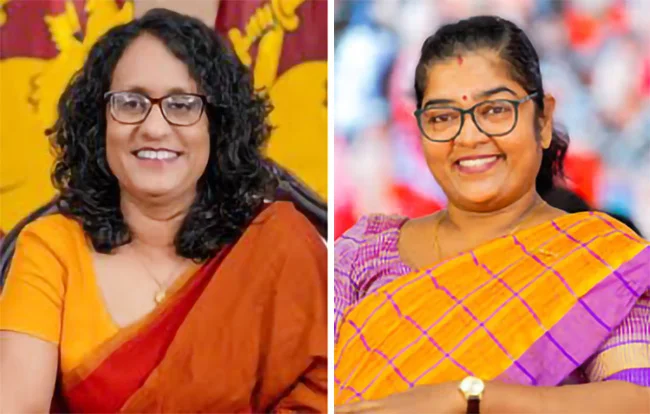
by Farzana Haniffa
 In February 2023, I wrote a piece for Kuppi entitled, The future is female? There I discussed how while most of our undergraduate students were female, the University system was not doing enough to equip them to address the violence and misogyny in our society. In that article, I also illustrated the nature of violence and misogyny that students and young women in general face in our country.
In February 2023, I wrote a piece for Kuppi entitled, The future is female? There I discussed how while most of our undergraduate students were female, the University system was not doing enough to equip them to address the violence and misogyny in our society. In that article, I also illustrated the nature of violence and misogyny that students and young women in general face in our country.
Today, nearly two years after, I want to revisit some of the points made there in relation to recent political changes. After the election of the current government, with the participation of an array of women leaders, and the mobilization of a constituency, specifically identified as women, there is much to assess and a lot to celebrate. In the long road towards addressing the violence and misogyny in our society, the improvements in women’s leadership in Parliament is significant. I argued back then that young women, who graduate from university, enter a world where women face a significant threat of violence. I suggested that they needed to be equipped to both face as well as transform such a world. Such a transformation requires that women take on greater leadership roles. The new government has enabled the beginning of such a transformation through supporting a significant number of competent and experienced activist women to enter Parliament. This column would like to recognize and endorse this transformation and speculate as to what this might mean for our female student population today.
As Gamage and Dassanayake recently pointed out in Himal South Asian, the NPP actively mobilized women voters in a manner that was substantively different from earlier attempts. They mobilized women, highlighting women’s unpaid care work and the gendered nature of discourses regarding women’s bodies. The NPP capitalized on the fact that women in Sri Lanka who had already made great strides in other spheres were quite ready to assume leadership in politics. (Women’s groups had been agitating for decades for greater representation in government). Coming into the general elections of 14th November, 2024, the NPP nominated 36 women candidates, and 20 of them were elected. The numbers of women in Parliament—never more than a paltry 5% of the legislature since independence – is now almost 10%. However, the party’s nonrecognition of these women’s capabilities for greater leadership in the Cabinet and as Deputy Ministers was disappointing. Only two women Harini Amarasuriya, Prime Minister and Minister of Education, and Saroja Paulraj, Minister of Women and Child Affairs, were considered worthy of leadership in the Cabinet.
Our Parliament, long a (Sinhala) male bastion, has hardly been exemplary of the leadership needed for the country. It has rarely been a place that women and sexual and gender minorities have been able to have their voices heard. Victorian era laws banning same sex sexuality remain in the law books. The Muslim Marriage and Divorce Act-MMDA, a problematic relic from the 1950s, has been left unchanged for decades. Any women-friendly legislation has been hard fought. In fact, Parliament has been the locus of some of the most discriminatory, dismissive and derogatory discourse on women. (The nature of parliamentary speech regarding women has been documented by the Women and Media Collective in a 2016 publication.) While it remains too early to speak of legislation, there is at least a discernible difference in the parliamentary discourse on women as a result of the contribution by the new women MPs. Additionally, some of the female MPs’ contributions have led to substantive debates on issues ranging from debt restructuring to social protections.
In her maiden speech, NPP MP Kaushalya Ariyarathne asserted that the country depended on the labour of women but gave them few rights and privileges and subjected them to abuse. She reminded the Chamber of the many laws that needed amending in relation to the discrimination faced by women, as well as bisexual and gender minorities. She referenced the failure to amend the MMDA and the inability to bring about legislation to control micro-finance, as issues the previous political regimes needed to account for. NPP MP Lakmali Hemachandra, arguing against the portrayal of the government’s decision to not renegotiate with the IMF as a continuation of the Wickremasinghe agenda, reminded the Chamber that the goal of the current government was not to further burden the citizenry but to encourage the greater participation of those who were pushed out of economic activity in the past years. Regardless of what position we may hold on the IMF reforms, and regardless of our critique of government policies, Ariyarathne and Hemachandra’s (and others’) elevation of discussions in Parliament to the substantive issues facing the country should be recognised.
Harini Amarasuriya, in addition to being the Premier, is also Minister of Education. In keeping with her long years of activism in the education sector, if Amarasuriya is able to improve our struggling education sector, her contribution will be significant, not just for future generations of students but also for women’s leadership. Saroja Paulraj, in charge of the Ministry of Women and Child Affairs, too, has a challenge. The Women’s Ministry generally assigned the herculean task of addressing all issues related to women, experienced a 50% budget cut under the last government and has traditionally enjoyed very little substantive support to carry out its responsibilities. It has long lacked the transformative feminist potential needed for substantive change and it has been providing little more than social services. It is hoped that under this government, with Amarasuriya, Paulraj and the other women leaders of the NPP that worked for women’s political mobilization, this will change. The Ministry must reflect the progressive ethos that the women leaders of the NPP have cultivated and Paulraj must have the space to bring in her own vision emerging from decades of feminist grassroots activism into the work of the Ministry. The expectations from the women in leadership positions is significant and their achieving their goals will depend on the support they have from within the government and from the public.
Responding to the presence of strong women in Parliament, social media and middle- and upper-class drawing rooms have rarely been interested in their competence or their possibly transformative impact. Peppered with praise for the change that is being promised and lived, the conversation has been mostly about the Prime Minister’s sexual orientation. In the case of the younger MPs speaking in Parliament, the response has been more virulent. Two of them have been the target of sexualized fake news reporting. In one instance, a social media account, claiming to be of an MP, state that a woman parliamentarian had sex with the said MP in a hotel in a Colombo suburb. In another, an MP’s illicit affair is reported to the Police by his spouse, citing another of the government women MPs as the individual concerned. Both social media and a prominent newspaper reported this news, naming the woman MP. There is little or no recourse for those whose names appear on such posts, and they are shared with great glee—anticipating no personal consequences. These sorts of reportage and amplification indicate a problem with the social media platforms, the lack of regulation of such abuse as well as the rampant and violent misogyny in our society.
The political leadership’s long dismissal and derogatory treatment of women has leached into our public institutions and our daily lives. The high rates of intimate partner violence in the country have been documented. (See the 2016 report by the Department of Census and Statistics). The dismissive treatment of cases of sexual and gender-based violence by the Police and other state institutions concerned with responding to women suffering abuse have also been documented. The male population in general—across class and ethnicity—seems to have no filter with regards to the nature of insults levied against women on social media and elsewhere. The media, too, has no compunctions about reporting only that which borders on the defamatory and abusive.
The world that our students will enter today, therefore remains malevolent and thick with the possibility of violence. Overturning the culture of misogyny will take law reform and regulations, as well as time. Our students therefore need to be prepared to contribute to and lead such processes in the future. However, the thoughtful and competent activists, women currently in Parliament are figures that our students can emulate and political leadership is now a possibility that all young women can aspire to. Although there is much work still to be done, there is also much to be hopeful in the new year.
(Farzana Haniffa is professor in the Department of Sociology, University of Colombo)
Kuppi is a politics and pedagogy happening on the margins of the lecture hall that parodies, subverts, and simultaneously reaffirms social hierarchies.
Features
Three Great Editors: Mervyn, Gamma and Ajith
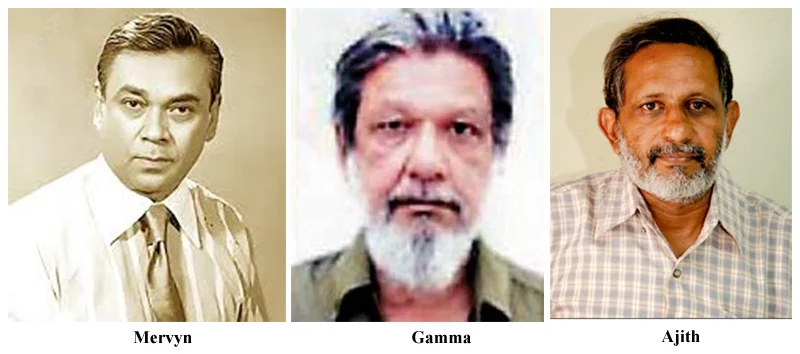
Journalism Awards for Excellence – 25th Anniversary
by Dayan Jayatilleka, PhD
(Reproduced from the souvenir for 25th Journalism Awards for Excellence ceremony to be held today.)
MERVYN
Mervyn de Silva
has been described as “the greatest journalist that Sri Lanka ever produced” (Radhika Coomaraswamy, 2001). Furthermore, “… [Mervyn’s] literary critical writing…and his affirmative humanism that grew from it enriched the world of journalism in Sri Lanka as no one else has done.” (Godfrey Gunatilleke, 2005).
Mervyn began as a free-lancer, joined the profession as a cub-reporter, became Deputy Editor, Observer, and reached the top as Editor Daily News and Editor-in-Chief. Choosing to remain in Sri Lanka declining lucrative job offers in journalism overseas, he made his mark in the elite international media as Colombo’s correspondent for the BBC, The Economist (London), the Financial Times (London), Times of India and India Today.
An unmatched achievement in Sri Lanka, Mervyn became the Editor-in-Chief of the two largest, rival journalistic establishments of the day: Lake House and The Times Group.
He was not only a print journalist, but also a veteran radio journalist, a broadcaster with programmes on literature (‘Off My Bookshelf’) and foreign affairs, running for decades. He also had a world affairs programme on Rupavahini TV in which he was the ‘talking head’ interviewed by Eric Fernando.
He wrote influentially on national politics while it was widely acknowledged that “No one was more aware of international affairs than Mervyn de Silva…one of the pioneer intellectuals of non-alignment” (Radhika Coomaraswamy 2001).
In print journalism he excelled in diverse roles, as a critic on literature and film, as columnist from his earliest days in journalism, ‘Daedalus’ being his first penname, ‘The Outsider’ the second, and ‘Kautilya’ his last. An authoritative and memorably stylish editorialist, he was also a subversively satirical columnist (and occasional versifier).
In a singular honour, in 1971Mervyn de Silva spent a month in DC working with the legendary Foreign Editor of the Washington Post, Phil Foisie, at the end of which a think-piece by Mervyn was given a rare full-page spread in The Washington Post (1971).
He also authored two Editorial page pieces in the International Herald Tribune (1986). In a ‘world scoop’ he broke the story on the Indo-Sri Lanka Accord (1987) in the Financial Times. Prime Minister Premadasa first came to know of the Accord reading Mervyn in the FT in Tokyo.
Published in and broadcast by the elite Western media, he was also a Vice-President of the International Organization of Journalists (IOJ), the vast network of Soviet bloc and Nonaligned journalists, a rare personification of the confluence of two contending currents and traditions in international journalism: Western liberal-democrat and Socialist/Third World.
His passionate adherence to the highest international standards of journalism and editorship saw him removed from his post twice, by two ideologically antipodal Governments—Sirimavo Bandaranaike’s and JR Jayewardene’s.
Having reached the apex in mainstream newspaper journalism, Mervyn founded a progressive magazine, repeating his achievement this time in ‘alternative periodical journalism’ as publisher/ founder-editor of the Lanka Guardian.
Mervyn was referred to in the world press as Sri Lanka’s Hassanein Heikal, Nasser’s friend and legendary editor of Al-Ahram (Cairo), and Sri Lanka’s Nikhil Chakravartty, iconic editor of Mainstream (Delhi).
GAMMA
Gamini Weerakoon
, universally known as Gamma, was Sri Lanka’s greatest wartime editor. Unlikely as it may seem, when I look in long retrospect, there was a flicker of that potential already discernible when I first saw him in the early 1970s.
As Editor, Daily News, and Editor-in-Chief, Lake House, Mervyn de Silva (and wife Lakshmi) hosted two parties annually: one, drinks and dinner for the staffers of the English-language Lake House press and foreign journalists in town; the other, cocktails for the diplomatic corps—the former at the private hall upstairs of the Chinese Lotus Hotel in Colpetty, the latter at the Galle Face Hotel. As precocious only son barely in his teens (and long trousers), I was present at the first event.
Gamma Weerakoon, tall, ginger-bearded, gravelly voiced, was a singularly imposing physical presence in the corner by the open windows, holding court amidst a crowd of journos shaking with laughter. As I edged closer I got what it was all about: Gamma had a non-stop stream of stories, mimicry and punchlines which were as unprintably salacious as they were undeniably hilarious. What remained in the mind—apart from a wicked imitation of an Indian cricket commentary—was the man’s personality. You could never ignore him.
“I learned from the best” Gamma told me at my father’s funeral in 1999, referring to his Editors/bosses. If Mervyn, behind his editorial desk, always in suit-and-tie, jacket slung on his chair-back, the most stylishly attired of Sri Lankan Editors, was a respected boss and remote father figure for journalists, Gamma in his rolled sleeves, always accessible in the newsroom –the ‘shopfloor’ so to speak– was the elder brother figure. His inimitable leadership style as Editor was already incubating.
Mervyn had left mainstream journalism in 1978 and founded the fortnightly Lanka Guardian magazine. A journal was a more conducive vehicle for critical inquiry about the larger Lankan crisis. Making a comeback having been sacked by Sirimavo and JR, founding and sustaining a periodical which immediately had high visibility and impact, made Mervyn a legend once again, but Gamma’s challenge as Editor of a relatively new mainstream newspaper was equally if differently demanding.
Vijitha Yapa, The Island’s first editor was also an outstanding wartime editor but he quit journalism to establish his famous bookstore. Gamma was on the frontlines every day, in the journalistic trenches, giving leadership during decades of civil wars and foreign military intervention.
The task of the editor of a state-run newspaper was simple in wartime. Gamma wasn’t one. He captained a privately-owned paper which had to maintain credibility as it reported the news, took editorial stands, published diverse commentary. A strong man, he was the courageous editor of a combative newspaper which provided an indispensable space for sovereignty and freedom, democracy and order against all comers, during the most massively violent period of our history in a century.
AJITH
Ajith Samaranayake’s
entry into professional journalism was facilitated by the LSSP theoretician Hector Abhayavardhana, but well before he joined Lake House, he had been published in the prestigious editorial page of the Ceylon Daily News by Mervyn de Silva. That first foray in the early 1970s was a perfectly written little piece, the title of which caught the eye of the editor who was always sympathetic to the off-beat, provided it was well-written. Ajith wrote unforgettably on ‘Why I Failed the A-levels Three Times’.
The next time Ajith caught Mervyn’s eye was in 1976, when I had pointed out to him a report at the bottom of the Daily Observer’s front page, on a ‘Sweep-Ticket Seller’. It was a mini-masterpiece of a ‘human interest story’. Mervyn called in Ajith and gave him a regular slot and larger responsibility which opened his pathway eventually to the Editor’s chair of The Island and the Sunday Observer respectively.
Several things distinguished Ajith as a journalist and Editor. He apprenticed with those who belonged to the first post-Independence generation of the intelligentsia and journalism (like Mervyn), but was himself of a younger generation than most of his colleagues, which meant he was socialised, formed, in a different time of The island’s history, had a different vantage-point and brought to bear different perspective.
Born in 1954, Ajith grew up not only in post-1956, but also post-1971 Sri Lanka. Though he had been mentored by highly literate left and liberal minds of an older generation, Ajith filtered that knowledge through the very different collective experience of his tormented generation and let his considerable reading illumine that experience. Ajith’s sensibility was shaped by engagement with the bilingual arts, politics, writings, reflections and personalities of our contemporary history.
He was a bridge that brought the work of the Sinhala-educated intelligentsia, especially the cultural intelligentsia, to the attention of the readers of mainstream English-language newspapers, while he enriched the endogenous intelligentsia by bringing to bear the best of western (including Marxist) literary criticism to the evaluation of their work.
In that sense Ajith was carrying on the pioneering cross-cultural criticism of Charles Abeysekara and Sarath Amunugama.
Ajith Samaranayake was primarily a cultural critic in whose contributions as journalist and Editor, the socio-cultural dimension bulked large.
His superb ‘situating’ of personalities past, made Regi Siriwardena dub him ‘the prince of obituarists’.
One of Ajith’s acts as Editor, The Island was to give the forgotten but influential radical literary critic and lecturer at the University of Kelaniya, Ranjith Gunawardena, a half-page column on writers and criticism, which ran into a series of several dozen articles.
Tragically, an inescapable aspect of journalistic culture universally, proved to be Ajith’s undoing. Mervyn and Gamma introduced him to the bars where he met the journalistic fraternity. A heavy but self-controlled drinker, Mervyn never touched local booze even as a reporter, while Gamma had a boxer or ruggerite’s physique to absorb anything he drank. Ajith, frail, never had the stamina but could never kick the habit. It took him on a downward spiral to the lower depths, once too often.
-
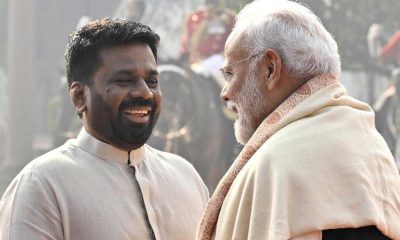
 Features6 days ago
Features6 days agoAKD faces challenging year ahead
-

 Editorial6 days ago
Editorial6 days agoA kiri-kekiri issue
-

 Sports6 days ago
Sports6 days agoSt. Sebastian’s dominate at Bambalapitiya
-

 Features5 days ago
Features5 days agoThey, too, had a ball …Down Under
-
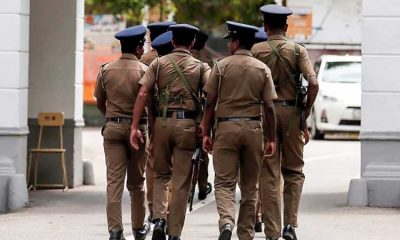
 News3 days ago
News3 days agoReshuffle of senior cops on the cards
-
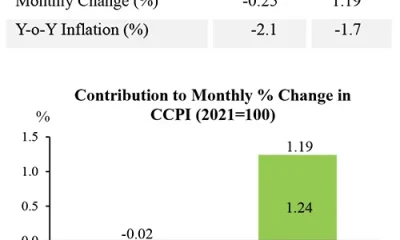
 Business5 days ago
Business5 days agoCCPI-based headline inflation continued to remain in negative territory in December 2024
-

 Editorial5 days ago
Editorial5 days agoMessages and subtexts
-

 Editorial4 days ago
Editorial4 days agoBribe-gate and other unsolved plots












